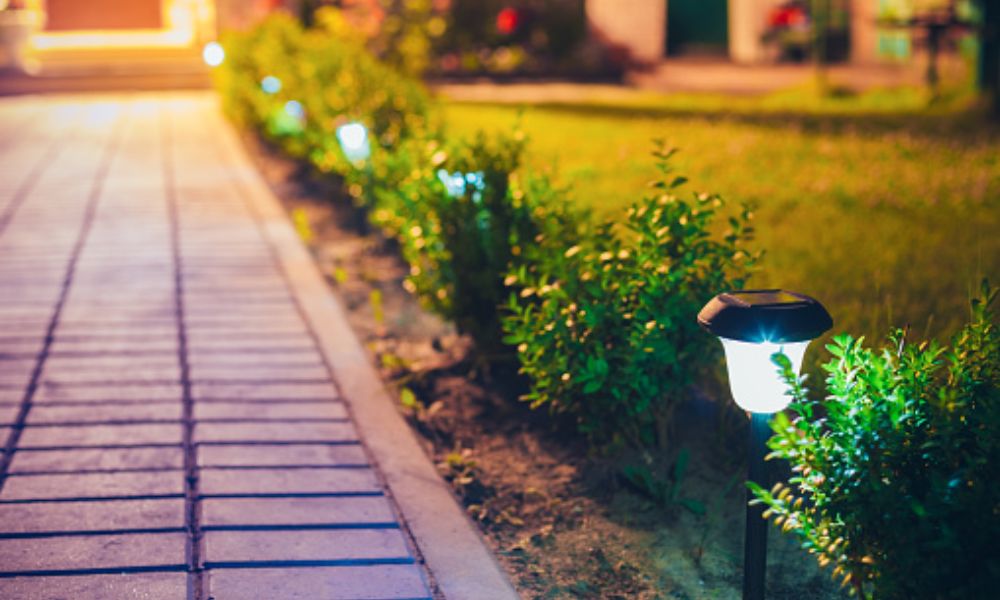I used to think solar lights would last forever. Just stick them in the ground, and they’d glow all night—easy! But after a year, some got dim. Others stopped working. That’s when I started asking: how long do solar lights last?
I’ve been using solar lights for years now—on my porch, along my path, even near my shed. I’ve learned a lot. Like how long it takes solar lights to charge, and why some don’t work well in winter.
In this guide, I’ll share what I’ve learned. I’ll cover how many hours solar lights work, how long they stay on at night, and how to replace the battery in solar lights when they stop working.
Let’s walk through it all, step by step. You’ll find real tips, not just tech talk. And by the end, your lights will last longer and shine brighter.
Factors That Affect the Lifespan of Solar Lights
How long your solar lights last depends on a few key things—especially the battery, the solar panel, and the build quality.
Battery Quality and Type
NiMH batteries usually last 1–2 years. Li-ion batteries can last 2–3 years with proper care.
The battery is the heart of your solar light. Most lights use either NiMH (Nickel-Metal Hydride) or Li-ion (Lithium-ion) batteries. From my own experience, rechargeable AA NiMH batteries work best for everyday solar lights.
At first, I just used the batteries that came with the lights. Big mistake—they died within months. Now, I replace my batteries every 18 months, and my lights stay bright all year.
My tip: Use trusted brands like AmazonBasics or Panasonic. They last longer and perform better in all weather.
Solar Panel Efficiency
Solar panels need 6+ hours of direct sunlight to fully charge the light. Shade, dust, or bad placement reduces efficiency.
Think of the solar panel as your light’s “charger.” If it doesn’t get enough sun, your light won’t last through the night.
I once placed a few lights under a tree—big mistake. They barely stayed on for an hour. As soon as I moved them to a sunny spot, they worked much better.
My tip: Wipe the panel clean every 1–2 weeks. A little dust can block sunlight and shorten the runtime.
Build Quality and Weather Resistance
Good solar lights are waterproof and rated IP65 or higher to handle rain, snow, and heat.
Cheaper lights might look nice at first, but they don’t last long. My first plastic set cracked after one rainy season. Now, I only buy metal-bodied, waterproof solar lights with sealed battery compartments.
My tip: Always check for the IP65 waterproof rating on the box. These lights are much more durable and safer for outdoor use.
Key Lifespan Factors
| Factor | Why It Matters | My Tip |
| Battery | Powers your light; weak battery = short life | Use rechargeable NiMH batteries from trusted brands |
| Solar Panel | Needs sun to charge; shade/dust reduces output | Keep in direct sunlight & clean regularly |
| Build Quality | Weak materials break easily in bad weather | Choose IP65-rated, waterproof metal lights |
How Long Do Solar Lights Stay On at Night?
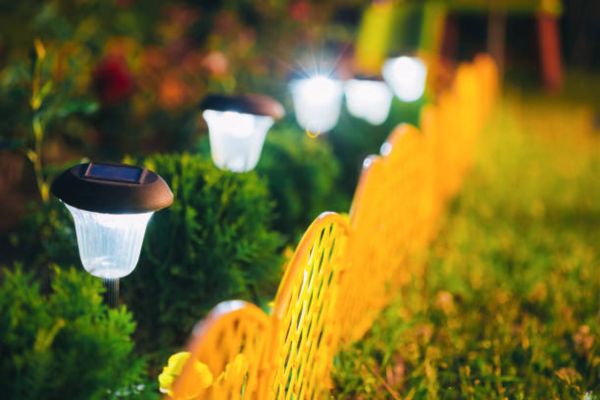
Most solar lights stay on for 6 to 10 hours after a full day of sunlight—that’s what I’ve seen with almost every set I’ve used. In the summer, mine usually glow from dusk to dawn. But in the winter? Some fade by 3 AM, even if they had a decent charge during the day.
That’s because how long your lights stay on at night depends on a few things: how much sun they get during the day, how healthy the battery is, and how clean or efficient the solar panel remains.
When my lights started turning off too early, I found out two of them were sitting under a tree. They just weren’t getting enough sun to charge properly. Once I moved them to a sunnier spot, the nighttime performance improved fast.
Also, if the battery is old or low-quality, it won’t hold charge well—even if the panel is doing its job. That’s why I replace my batteries every 18–24 months. And don’t forget to clean the panel! A layer of dust might seem harmless, but it blocks light and weakens charging.
How Many Hours Do Solar Lights Work Per Charge?
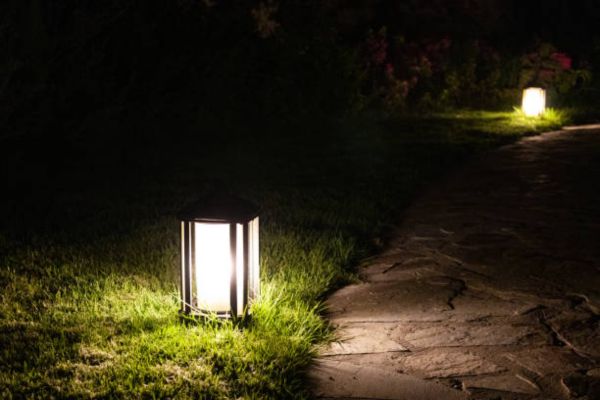
On a good sunny day, most solar lights run for 6 to 10 hours after they’re fully charged. That’s been true for almost every brand I’ve tested. If the light gets enough sun during the day, it will usually stay bright through most of the night.
But the exact number of hours can change based on a few things. In summer, long sunny days give you more charge time, so your lights shine longer. In winter, shorter days and lower sun angles mean less charging—and sometimes only 4 to 6 hours of light at night.
Cloudy weather also matters. Even one gloomy day can cut your charge short. I’ve noticed my lights dim earlier on back-to-back cloudy days.
And don’t forget about panel placement. If your solar panel isn’t facing the right direction or is blocked by shade, it won’t charge as well. I once had two lights side by side—but one was under the edge of the roof. That one lasted two hours less every night!
How Long Does It Take Solar Lights to Charge?
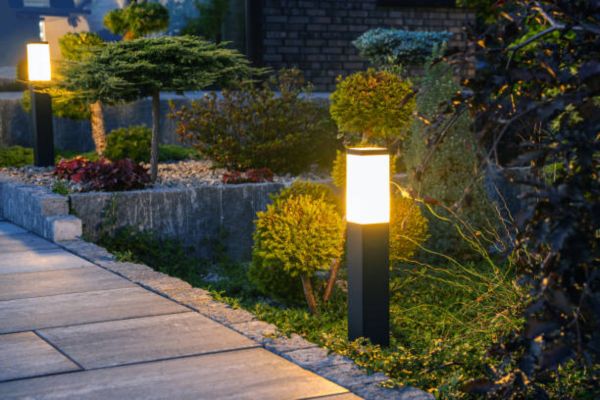
On most days, solar lights take about 4 to 8 hours of direct sunlight to charge fully. That’s been true for every light I’ve tested—from basic path lights to more advanced motion ones. If they get full sun, they’ll soak up enough energy to stay on through the night.
You might wonder, how long does it take solar lights to charge if it’s cloudy or late in the day? Or even, how long does it take for solar lights to charge in winter? The answer is—it depends on sunlight strength, not just the number of hours. Weak sun means slower charging, no matter how long the panel sits outside.
If your lights seem like they never reach full charge, check the basics first. Is the panel shaded part of the day? Is it dirty? Is it tilted wrong?
Here’s what helped me:
- I clean the solar panels with a soft cloth every week or so. Even a little dust makes a big difference.
- In winter, I tilt the panels just a bit—so they catch more of the low-angle sun. A 15–20° tilt made my lights stay on 2 hours longer!
- I also avoid placing lights near fences, gutters, or bushes. Shadows kill charge speed.
So, while most best solar post lights need 4 to 8 hours of direct sun, you can get better results with just a little fine-tuning.
Do Solar Powered Lights Work in the Winter?
Yes, solar powered lights do work in the winter, but they aren’t as bright or long-lasting as in summer. That’s because winter brings shorter days, weaker sunlight, and more clouds—so the lights don’t get fully charged.
From my own experience, I noticed my solar path lights would shut off much earlier in the colder months. In summer, they’d last until dawn. But in winter? Sometimes they’d dim before midnight.
The main problem is low sun exposure. Even on sunny days, the sun sits lower in the sky and doesn’t hit the panel directly. And if there’s snow or dust on the panel, that makes things worse.
Here’s what I did to fix it:
- I tilted the panels slightly upward to catch more of the low winter sun. It really helped.
- I moved a few lights to sunnier spots, away from fences or overhangs that blocked light.
- I switched to higher-capacity rechargeable batteries in a few of my lights. That gave them a bit more run-time even on days with less charge.
So yes, your lights can still work in winter—just not at full power. A little adjustment goes a long way in keeping them glowing, even when it’s cold outside.
Can You Replace the Battery in Solar Lights?
Yes, you can replace the battery in solar lights, and in most models, it’s actually very easy to do. I’ve replaced dozens myself—on garden lights, motion-sensor lights, even some hanging ones. The process is quick, and it can give old, dim lights a brand-new life.
When one of my path lights started flickering, I almost threw it out. Then I popped it open, swapped the battery, and boom—it was glowing like new. Since then, I always check the battery first before replacing the whole unit.
My Top Tips to Make Solar Lights Last Longer
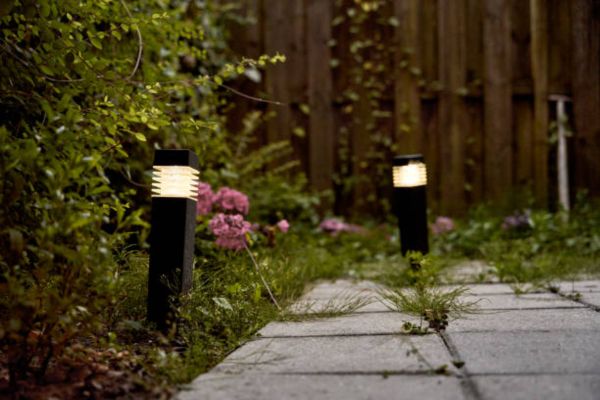
If you want your solar lights to go the distance, a little care makes a big difference. Over the years, I’ve found a few simple tricks that help keep my lights glowing strong—even after five seasons outdoors.
Clean the Panels Every 2 Weeks
Dirty panels = poor charging. Dust, pollen, or bird droppings can block sunlight and shorten runtime. I use a soft cloth to gently wipe the panels every couple of weeks. It only takes a minute but helps a lot.
Upgrade the Batteries
The batteries that come with most solar lights aren’t great. I replace them with AmazonBasics NiMH AA rechargeables, and they last way longer. Better batteries = brighter lights + longer life.
Store Lights During Snowstorms or Heavy Flooding
Even if your lights are waterproof, extreme weather can wear them down over time. During strong storms or long freezes, I bring mine inside and store them in a dry box until the weather clears up. It adds years to their life.
Avoid Shade and Streetlights
This one sounds simple, but it matters a lot. Never place solar lights under trees, fences, or near streetlights. Shade blocks charging, and nearby artificial light can confuse the sensor so your lights never turn on properly.
My $30 Solar Set That Lasted 5+ Years
I once bought a basic $30 solar light set during a summer sale. I didn’t expect much. But I followed all these tips—cleaned the panels, replaced the batteries, and brought them inside during bad weather. Guess what? They lasted over five years, and they’re still working today.
FAQs
Are solar lights waterproof?
Many are water-resistant, but for real outdoor durability, look for an IP65 or higher waterproof rating.
Can you use solar lights in the winter?
Yes, but they may charge less and run for shorter hours due to low winter sunlight.
How long does it take to charge solar lights fully?
Most solar lights need 4 to 8 hours of direct sunlight to fully charge.
Can you replace the battery in solar lights?
Yes! Most models let you easily replace the battery when it wears out.
Final Thoughts
If you’re wondering whether solar lights are worth it, my honest answer is yes—100%. But here’s the key: they only pay off when you choose quality and give them a little care.
From my own experience, solar lights have been low-maintenance, energy-saving, and surprisingly durable. I’ve used them for everything—from lighting my walkway to adding a cozy glow to our backyard dinners—and they’ve saved me money on electric bills too.

